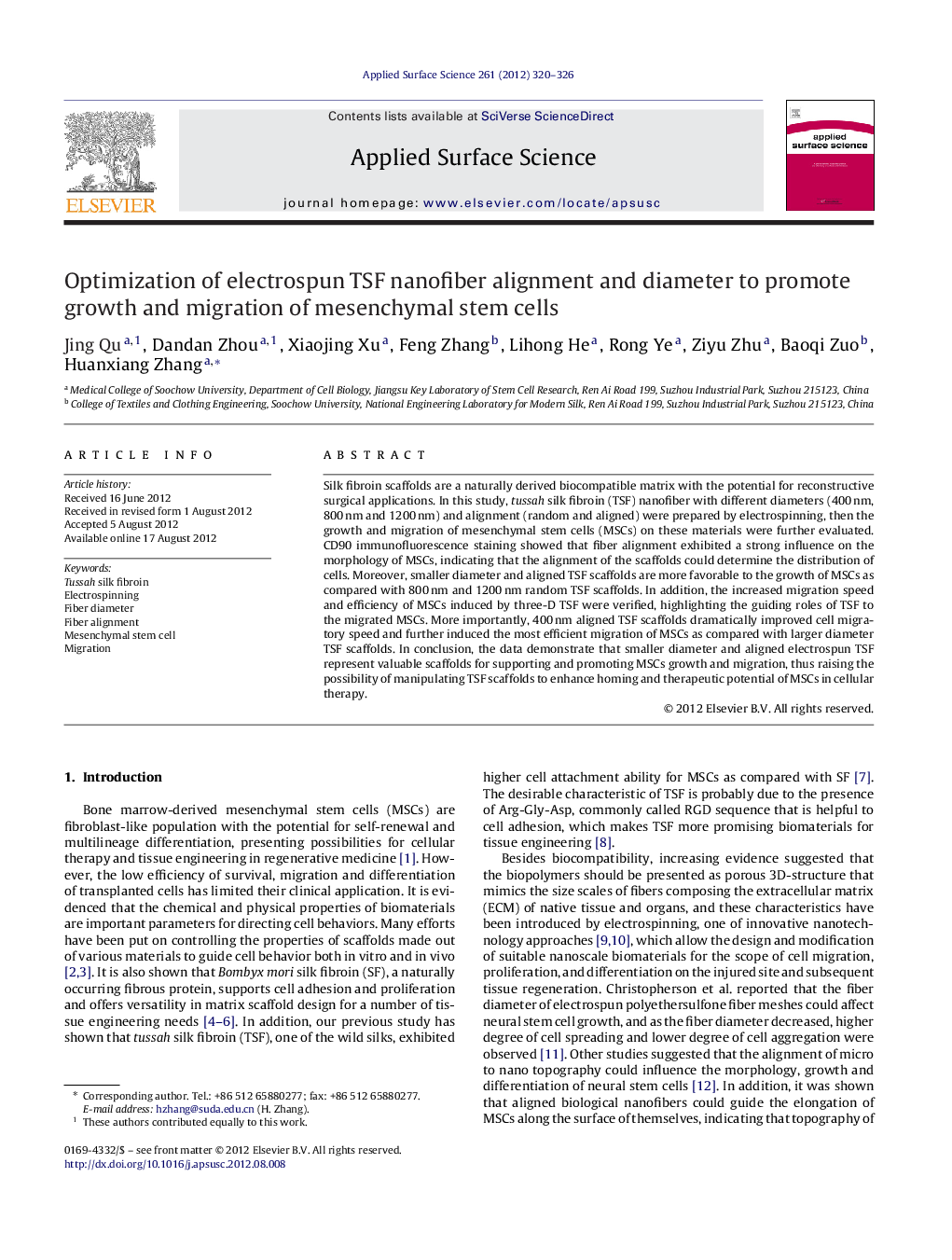| Article ID | Journal | Published Year | Pages | File Type |
|---|---|---|---|---|
| 5364544 | Applied Surface Science | 2012 | 7 Pages |
Silk fibroin scaffolds are a naturally derived biocompatible matrix with the potential for reconstructive surgical applications. In this study, tussah silk fibroin (TSF) nanofiber with different diameters (400Â nm, 800Â nm and 1200Â nm) and alignment (random and aligned) were prepared by electrospinning, then the growth and migration of mesenchymal stem cells (MSCs) on these materials were further evaluated. CD90 immunofluorescence staining showed that fiber alignment exhibited a strong influence on the morphology of MSCs, indicating that the alignment of the scaffolds could determine the distribution of cells. Moreover, smaller diameter and aligned TSF scaffolds are more favorable to the growth of MSCs as compared with 800Â nm and 1200Â nm random TSF scaffolds. In addition, the increased migration speed and efficiency of MSCs induced by three-D TSF were verified, highlighting the guiding roles of TSF to the migrated MSCs. More importantly, 400Â nm aligned TSF scaffolds dramatically improved cell migratory speed and further induced the most efficient migration of MSCs as compared with larger diameter TSF scaffolds. In conclusion, the data demonstrate that smaller diameter and aligned electrospun TSF represent valuable scaffolds for supporting and promoting MSCs growth and migration, thus raising the possibility of manipulating TSF scaffolds to enhance homing and therapeutic potential of MSCs in cellular therapy.
⺠Our data suggest a strong correlation between topography and growth behavior of MSCs. ⺠Aligned smaller diameter TSF scaffolds are more favorable to the growth of MSCs. ⺠The increased migration speed of MSCs induced by TSF scaffolds was verified. ⺠400 nm aligned TSF possess the maximum ability to promote migration of MSCs.
